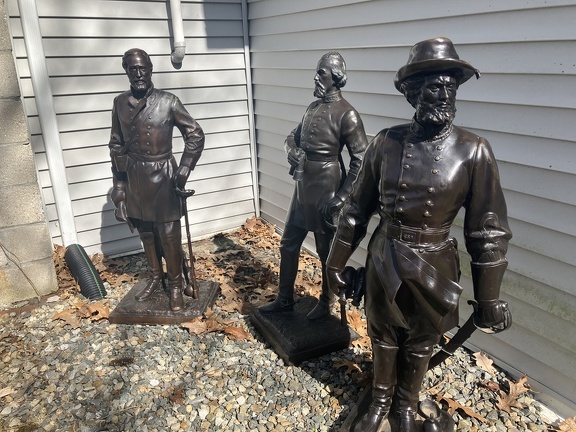On Tuesday, April 2, at about 9:30 p.m. a large black truck pulled into my driveway. Inside it were two new statues, coming to live with me.
That’s right, two.
One of these statues was Robert E. Lee. This statue, I had been anticipating for a while. About a year ago, I paid the deposit for him, and over the course of the year I received pictures documenting the process of creating him, from sketch to clay model to molds to finished product. Watching my statue come into the world was such a cool experience. Once the finishing touches were complete, I put the delivery date on my calendar, and I was eagerly anticipating seeing my new statue in person.
Four days before Lee’s arrival, the company that makes the statues asked me if, by any chance, I might want a statue of Nathan Bedford Forrest as well. This statue had been made at the same time as Lee, for a different person, but the original buyer had backed out. I thought it over for about 24 hours and, being me, said yes.
So, wrapped in blankets inside the truck on that cold and drizzly night were two new statues: one that was made for me and one that I adopted. Forrest was closest to the door, and a little ways further inside the truck was Lee. The statues were lifted out of the truck and placed in their new home.
Here is what they look like in daylight. In my opinion, they are the most beautiful sight imaginable.


From left to right:
General Robert E. Lee. He’s 4 ft tall, weighs 130 lbs, and is based on the statue that used to be in the state capitol building in Richmond, Virginia, as well as the one that used to be in Washington, D.C. He is one of a batch of 10 Lee statues that were made.
General Nathan Bedford Forrest. He is 4 ft tall, weighs 90 lbs, and is one of a batch of 5. Because he was a cavalry general, most statues depict him on horseback, and this is the first time a standing statue of Forrest has ever existed.
And of course… General Thomas “Stonewall” Jackson, who has been with me for one and a half years now. He is happy to have some friends!
I am having some landscaping work done in the yard, which is why Stonewall is not in his usual spot. For now, the statues are hanging out in this gravelly area off to the side. The weather has been rainy and yucky for the statues’ first week in their new home. Hopefully they don’t mind it too much! Once the weather improves, I will get them set up in a prettier, more permanent way.
I love the statues and am so happy to have them here. They mean so much to me.

